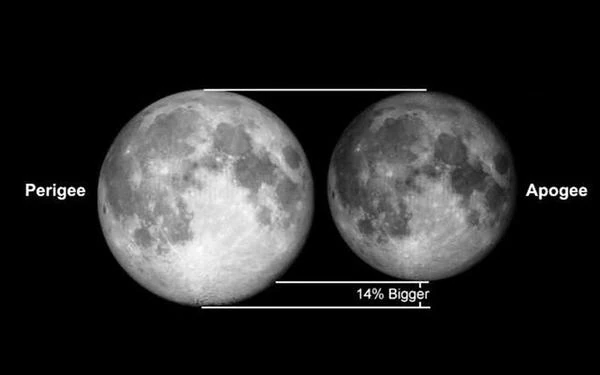
Image description: Apparent size difference of the Moon, between apogee and perigee. At its perigee (left), the Moon is 14% larger than at its apogee (right). Image source: NASA.
The Moon Illusion, also known as the Moon Illusion, is an optical phenomenon where the Moon appears much larger when it is close to the horizon compared to when it is high in the sky. This illusion is particularly noticeable during moonrises and moonsets.
You have all observed a Giant Full Moon rising on the horizon just above the buildings of our cities. The observation is astonishing because it seems that the Moon is enormous, but this optical illusion has no clear explanation.
If you take a ruler and measure the apparent size of the Moon when it is near the horizon and when it is high in the sky, you get the same measurement; there is no difference.
One of the explanations (still unclear) is that when we look at buildings or trees on the horizon, our brain interprets them as not being very far away. When the Moon is on the same horizon, the brain assumes that the Moon is also at this same distance scale and amplifies its size. Conversely, when the Moon is high in the sky, the brain compensates for this distance by making it appear smaller.
In reality, the angular size of the Moon does not change significantly between its appearance on the horizon and its passage at the zenith. Objective measurements show that the size difference is minimal and does not correspond to the difference perceived by the human eye.
The actual distance between the Earth and the Moon varies due to the Moon's elliptical orbit, but this does not explain the observed illusion.
The Moon moves in an elliptical orbit like all cosmic objects, and its distance from Earth varies. At its apogee (farthest point from Earth), it is 405,696 km away, while at its perigee (closest point to Earth), it is 356,410 km away.
When it is at its perigee, the Moon is larger (14% larger). 14% is also the difference between the two apsides (closest and farthest points) of the Moon's orbit relative to Earth. However, the Moon Illusion occurs for both apogee and perigee.